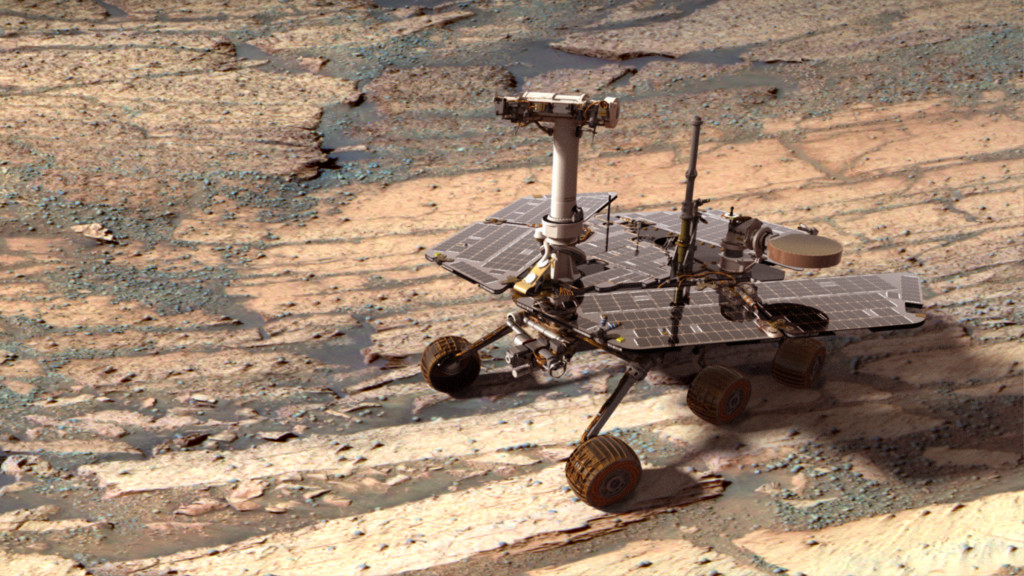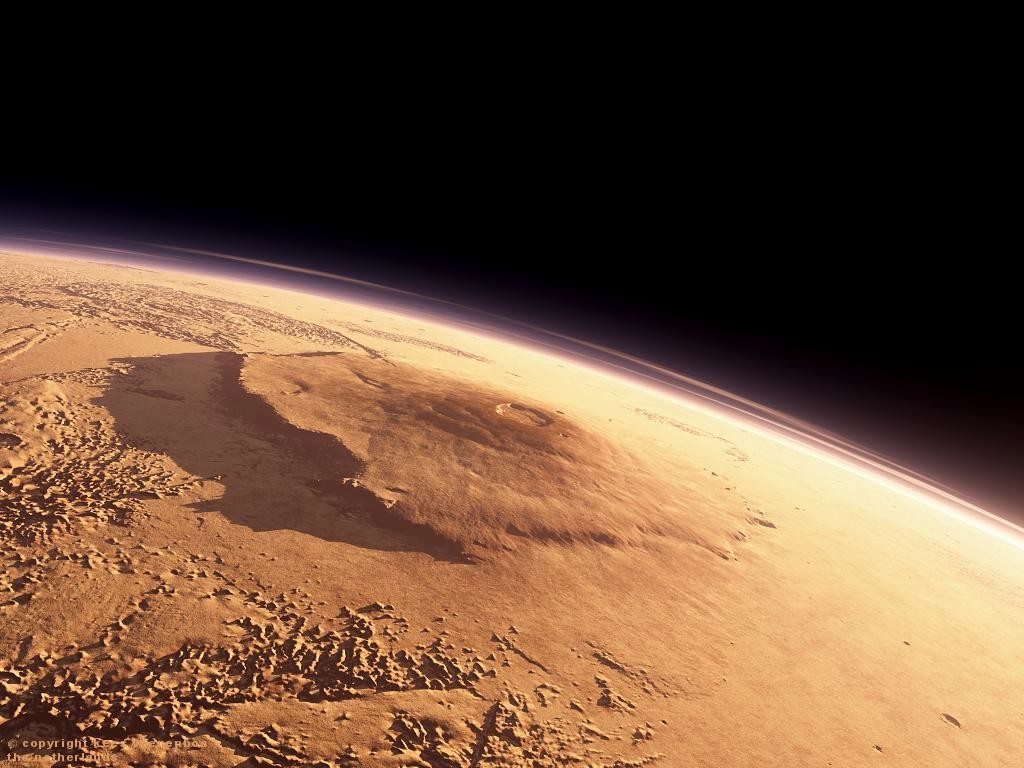Ring Around the Red Planet
Phobos, the larger of Mars’ two moons, is slowly sliding toward Mars. In about 50 million years it will either smash into the planet or break up — creating a dusty ring around the Red Planet.
Slam Dunk
With about 1/3 the gravity of Earth, anyone on Mars could dunk a basketball in a regulation goal. But the required spacesuit might cut down on your edge.
Speed Brakes
To survive a landing on Mars, a spacecraft must shave three zeroes off its speed in only six minutes — from 12,000 mph (19,000 kph) in space to less than 12 mph (19 kph) at the surface.
Record Rover
The Mars Exploration Rover Opportunity is the longest running rover — ever — in our solar system., Since landing in 2004, it has driven farther than any other rover in history. Opportunity was originally planned to be a 92-day mission.

A Digital Opportunity Rover on Mars
Are We There Yet?
If you could drive the minimum distance to Mars at an average highway speed — say 62 mph (100 kph) — it would still take more than 66 years to reach the Red Planet. A spacecraft takes about six months to get to Mars. It takes sunlight about four minutes longer to get to Mars than than it does to get to Earth.
Hot and Cold
Since Mars has a much thinner atmosphere than the Earth, heat from the sun easily escapes this planet. If a you stood on the surface of Mars on the equator at noon, it would feel like spring at your feet (75 degrees Fahrenheit, 24 degrees Celsius) and winter at your head (32 degrees Fahrenheit and 0 degrees Celsius).
Red Planet?
The Red Planet is actually many colors. At the surface we see colors such as brown, golden, tan and butterscotch. The reason Mars looks so red is due to oxidization — or rusting — of iron in the rocks, soil and dust of Mars. This dust gets kicked up into the atmosphere and from a distance makes the planet appear mostly red.
Super Volcano
Towering above the planet at 88,000 feet (27,000 meters), Mars’ Olympus Mons is three times as tall as Mt. Everest, the highest point on Earth. The base of the long dormant volcano is about the size of the state of Arizona.

Olympus Mons a large volcanic mountain on Mars
Swell Season
Imagine having to wait nearly two years for summer vacation. On Mars, a year takes about two Earth years and that means that Martian seasons last twice as long as they do here on Earth.
The Real Grand Canyon
Mars’ Valles Marineris is long enough to stretch from California to New York — more than 3,000 miles (4,800 km). The Martian canyon is 4.3 miles (7 km) deep and 200 miles (320 km) wide. Earth’s Grand Canyon is 277 miles (446 km) long, 18 miles (30 km) wide and its deepest point is about 5,250 feet (1,600 m).